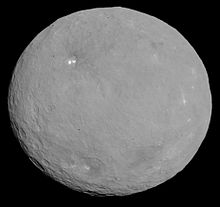A V-type asteroid or Vestoid is an asteroid whose spectral type is that of 4 Vesta. Approximately 6% of main-belt asteroids are vestoids, with Vesta being by far the largest of them. They are relatively bright, and rather similar to the more common S-type asteroid, which are also made up of stony irons and ordinary chondrites, with V-types containing more pyroxene than S-types.
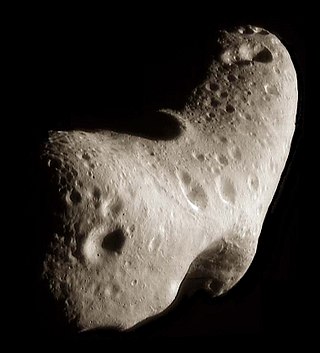
S-type asteroids are asteroids with a spectral type that is indicative of a siliceous mineralogical composition, hence the name. They have relatively high density. Approximately 17% of asteroids are of this type, making it the second-most common after the carbonaceous C-type.

C-typeasteroids are the most common variety, forming around 75% of known asteroids. They are volatile-rich and distinguished by a very low albedo because their composition includes a large amount of carbon, in addition to rocks and minerals. They have an average density of about 1.7 g/cm3.
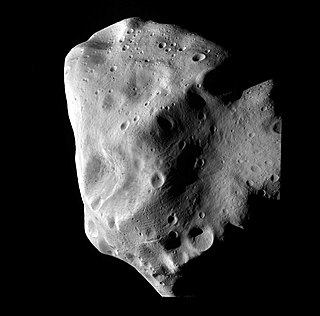
M-type asteroids are a spectral class of asteroids which appear to contain higher concentrations of metal phases than other asteroid classes, and are widely thought to be the source of iron meteorites.
Q-type asteroids are relatively uncommon inner-belt asteroids with a strong, broad 1 micrometre olivine and pyroxene feature, and a spectral slope that indicates the presence of metal. There are absorption features shortwards and longwards of 0.7 μm, and the spectrum is generally intermediate between the V and S-type.
P-type asteroids are asteroids that have low albedo and a featureless reddish spectrum. It has been suggested that they have a composition of organic-rich silicates, carbon and anhydrous silicates, possibly with water ice in their interior. P-type asteroids are found in the outer asteroid belt and beyond. There are about 33 known P-type asteroids, depending on the classification, including 46 Hestia, 65 Cybele, 76 Freia, 87 Sylvia, 153 Hilda, 476 Hedwig and, in some classifications, 107 Camilla.

B-type asteroids are a relatively uncommon type of carbonaceous asteroid, falling into the wider C-group; the 'B' indicates these objects are spectrally blue. In the asteroid population, B-class objects can be found in the outer asteroid belt, and also dominate the high-inclination Pallas family which includes the third-largest asteroid 2 Pallas. They are thought to be primitive, volatile-rich remnants from the early Solar System. There are 65 known B-type asteroids in the SMASS classification, and 9 in the Tholen classification as of March 2015.
F-type asteroids are a relatively uncommon type of carbonaceous asteroid, falling into the wider C-group.

Lutetia is a large M-type asteroid in the main asteroid belt. It measures about 100 kilometers in diameter. It was discovered in 1852 by Hermann Goldschmidt, and is named after Lutetia, the Latin name of Paris.
2934 Aristophanes, provisional designation 4006 P-L, is a carbonaceous Veritasian asteroid from the outer regions of the asteroid belt, approximately 22 kilometers in diameter. It was discovered during the Palomar–Leiden survey in 1960, and later named after ancient Greek dramatist Aristophanes.
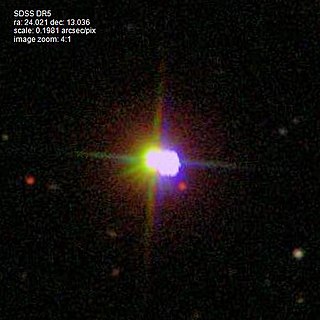
47 Aglaja is a large, dark main belt asteroid. It was discovered by Robert Luther on 15 September 1857 from Düsseldorf. The name was chosen by the Philosophical Faculty of the University of Bonn and refers to Aglaea, one of the Charites in Greek mythology. It was rendered Aglaia in English sources into the early 20th century, as 'i' and 'j' are equivalent in Latin names and in the Latin rendering of Greek names.
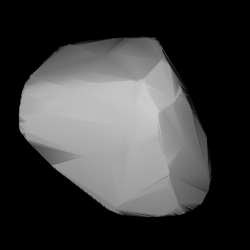
Klymene is a large, dark Themistian asteroid that was discovered by J. C. Watson on September 13, 1868, and named after one of the many Clymenes in Greek mythology. It is orbiting the Sun with a period of 5.60 years and an eccentricity of 0.16. The orbital plane is inclined by 2.8° to the plane of the ecliptic. It is classified as a C-type asteroid, indicating it probably has a carbonaceous composition. The spectra indicates the presence of aqueous-altered minerals on the surface based upon a sharp feature at a wavelength of 3 μm, and, as of 2015, is the only member of the Themis family found to show this absorption.

Siwa is a large and dark main-belt asteroid that was discovered by Austrian astronomer Johann Palisa on October 13, 1874, and named after Živa (Šiwa), a Slavic goddess of fertility.
K-type asteroids are relatively uncommon asteroids with a moderately reddish spectrum shortwards of 0.75 μm, and a slight bluish trend longwards of this. They have a low albedo. Their spectrum resembles that of CV and CO meteorites. A larger K type is 9 Metis.

An asteroid spectral type is assigned to asteroids based on their reflectance spectrum, color, and sometimes albedo. These types are thought to correspond to an asteroid's surface composition. For small bodies that are not internally differentiated, the surface and internal compositions are presumably similar, while large bodies such as Ceres and Vesta are known to have internal structure. Over the years, there has been a number of surveys that resulted in a set of different taxonomic systems such as the Tholen, SMASS and Bus–DeMeo classifications.
The X-group of asteroids collects together several types with similar spectra, but probably quite different compositions.
735 Marghanna is a large carbonaceous background asteroid from the central regions of the asteroid belt, approximately 74 kilometers in diameter. It was discovered on 9 December 1912, by German astronomer Heinrich Vogt at the Heidelberg-Königstuhl State Observatory in southwest Germany. The dark C-type asteroid (Ch) has a rotation period of 20.6 hours and is rather regular in shape. It was named after Margarete Vogt and after Hanna, the mother and a relative of the discoverer, respectively.
754 Malabar is a minor planet orbiting the Sun. It was discovered in 1906 by German astronomer August Kopff from Heidelberg, and was named in honor of a Dutch-German solar eclipse expedition to Christmas Island in 1922. Malabar is the name of a city and mountain in Indonesia. This object is orbiting at a distance of 2.99 AU from the Sun with a period of 5.16 years and an eccentricity (ovalness) of 0.048. Its orbital plane is inclined at an angle of 24.6° to the plane of the ecliptic.
16560 Daitor (; provisional designation 1991 VZ5) is a large Jupiter trojan from the Trojan camp, approximately 44 kilometers (27 miles) in diameter. It was discovered on 2 November 1991, by Belgian astronomer Eric Elst at the La Silla site of the European Southern Observatory in Chile. The carbonaceous C-type asteroid is one of the largest Jupiter trojans with an unknown rotation period. It was named after the Trojan warrior Daitor from Greek mythology.

The Jbilet Winselwan meteorite is a CM-type carbonaceous chondrite found in Western Sahara in 2013.
